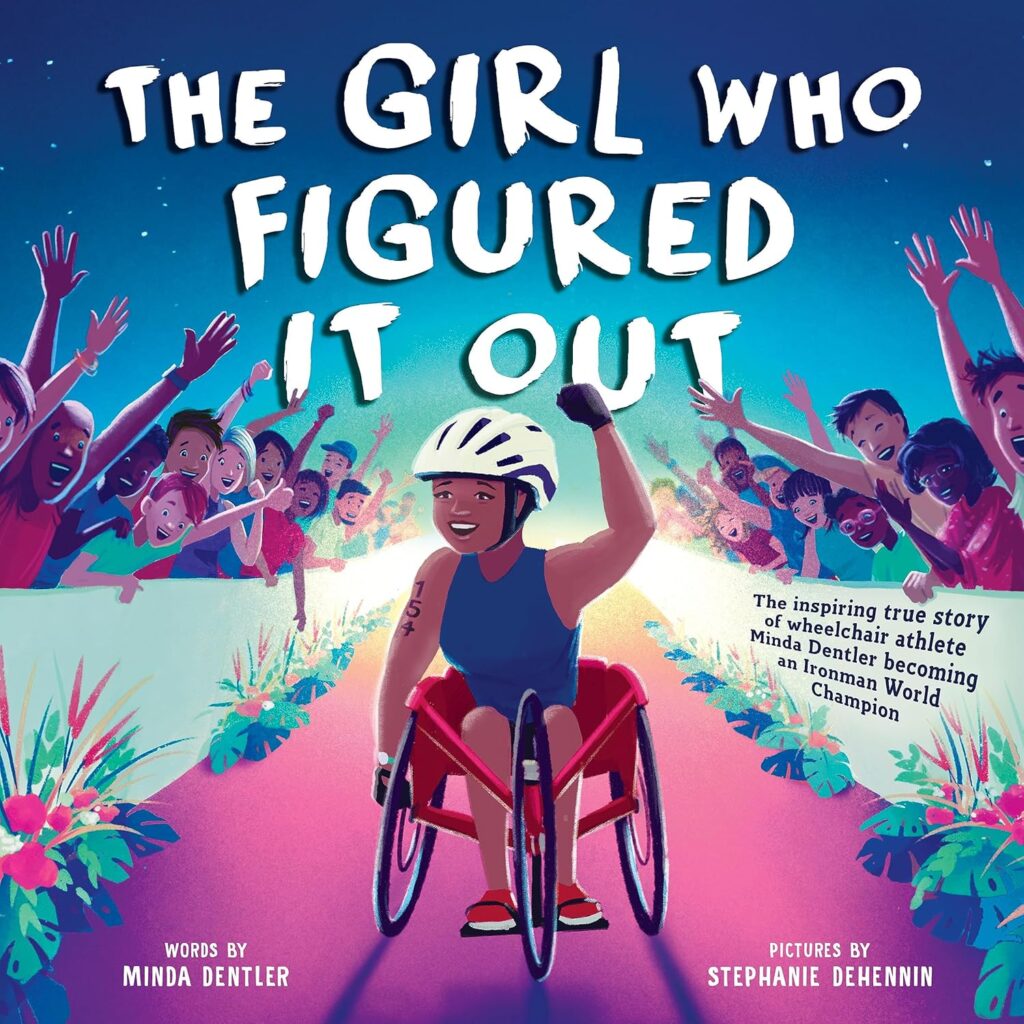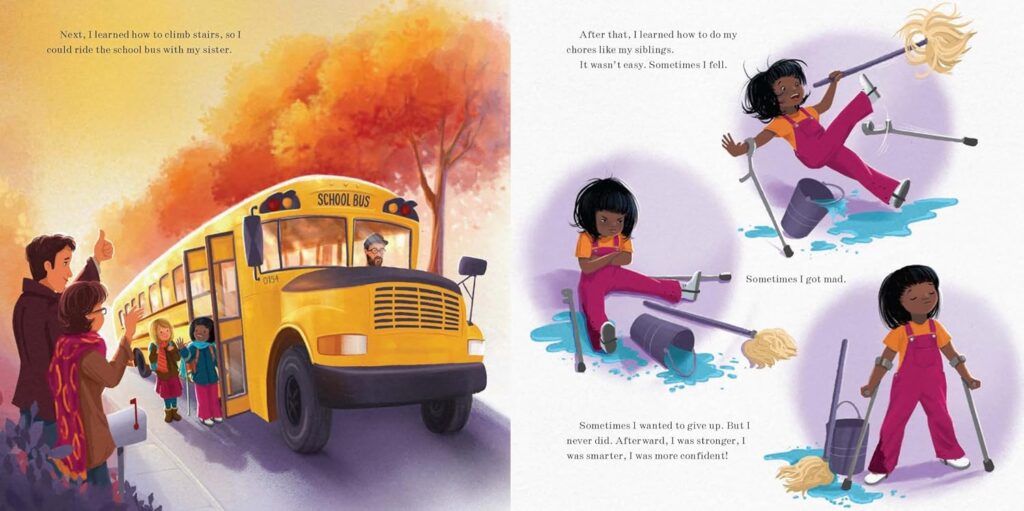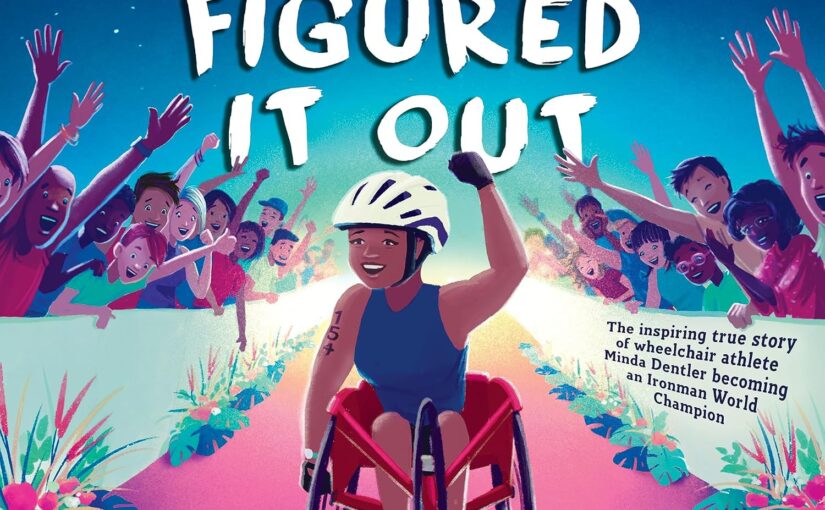When I teach middle school or high school I sometimes use the phrase “I don’t care” to reply to some students who are making excuses for them or someone else. They don’t speak. I/They never do their work. I/they am not/aren’t smart. After the student is done watering down my expectations I’ll tell them that “I don’t care…about that unrelated issue they were trying to distract me with and that they are capable of doing the simple, age-appropriate task that I’ve asked them to do. There are some students who get momentarily put-off by what they deem as a rude comment, but then they’ll think about it and hopefully internalize that they need to raise the bar of what they can do. The Girl Who Figured It Out got that message, albeit in a kinder, elementary-age package with colorful illustrations and a can-do message about overcoming obstacles that life throws your way.

The book also adheres to a formula that makes illustrated books connect to young audiences: have a topic they can understand, but in a vehicle they don’t know about. The Girl Who Figured It Out: The inspiring true story of wheelchair athlete Minda Dentler becoming an Ironman World Champion is by Minda Dentler, with illustrations by Stephanie Dehennin. Unless you’re an Ironman, follow that endurance competition, know a lot about Polio or the world of athletes with disabilities (her words, not mine), this story is probably new to you.

Dentler was born in a crowded village in India. To complicate matters ever further, as a toddler she was diagnosed with Polio, which rendered her legs and hips useless. Her mother was very poor and couldn’t financially care for her, so she was put up for adoption. A family in the United States adopted her and Dentler was provided with lots of positive input and the catch-all phrase of “just figure it out”. Disclosure: I love that phrase because as I referred to in the opening paragraph, too many youth want to be spoon fed things when it is more beneficial for them to figure it out.

She figured out many things that a girl like her wasn’t expected to. When she was five she was fitted with leg braces and crutches which increased her mobility. Sometimes the kids at school were jerks to her, giving her stupid nicknames and such. In the face of those people she took on the piano, made honor role every year in school, traveled solo through Europe, moved to New York City and got married.
That is only half of the book’s story and doesn’t touch on what makes Dentler’s path unique. While living in New York City she joined a running club for people with disabilities and was loaned a handcycle. This afforded her a newfound independence that she hadn’t experienced since being equipped with leg braces. The uphill parts of the neighborhood meets were challenging, but ones that she could overcome, eventually leading to her being in the New York City Marathon.

She then set her sights on a triathlon, but the only problem is that she couldn’t swim. With practice she learned how to swim, but still needed to master the racing wheelchair. The racing wheelchair is mechanically different than a handcycle and lets racers go faster by pushing the large rear wheels with their hands. After her first triathlon in New York she set the goal to complete in the Ironman World Championship in Kona, Hawaii, a competition that no female wheelchair athlete had ever completed.
Dentler trained for five years and competed, but wasn’t fast enough in the time trails during the cycling portion and her race was called. This was certainly not the outcome that she hoped for and thought about giving up, but started training again for nine months. In 2013 she tackled the 140 miles of the course again, this time becoming the first female wheelchair athlete to complete the competition. For the purpose of this review I’m oversimplifying aspects of the book, but there are more twists, turns and details to her life listed in The Girl Who Figured It Out.
Whenever Dentler felt like it was too much, that she couldn’t do it or wondered if the pain was too great she always remembered what her father said. Just figure it out. It’s a very simple phrase that reduces some high school students to the point of muted tears. But, just figure it out, think about the task at hand, and if you really want to accomplish said goal, you can do it. And all too often, students (and many adults) will fold at the first adverse sign of progress. The Girl Who Figured It Out is just an illustrated book, but its colorful illustrations and can-do message makes it a powerful template from which young people could set their compass for greater success in life.
The Girl Who Figured It Out: The Inspiring True Story of Wheelchair Athlete Mina Dentler Becoming an Ironman Champion is by Minda Dentler with pictures by Stephanie Dehennin and is available on Sourcebooks Explore.
There are affiliate links in this post.





 Facebook
Facebook Twitter
Twitter Flickr
Flickr GooglePlus
GooglePlus Youtube
Youtube